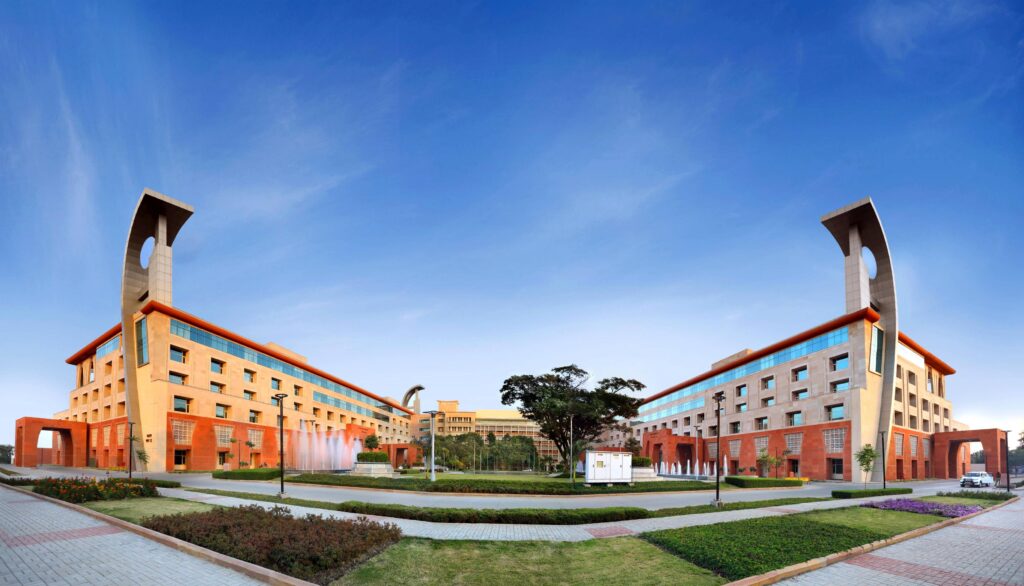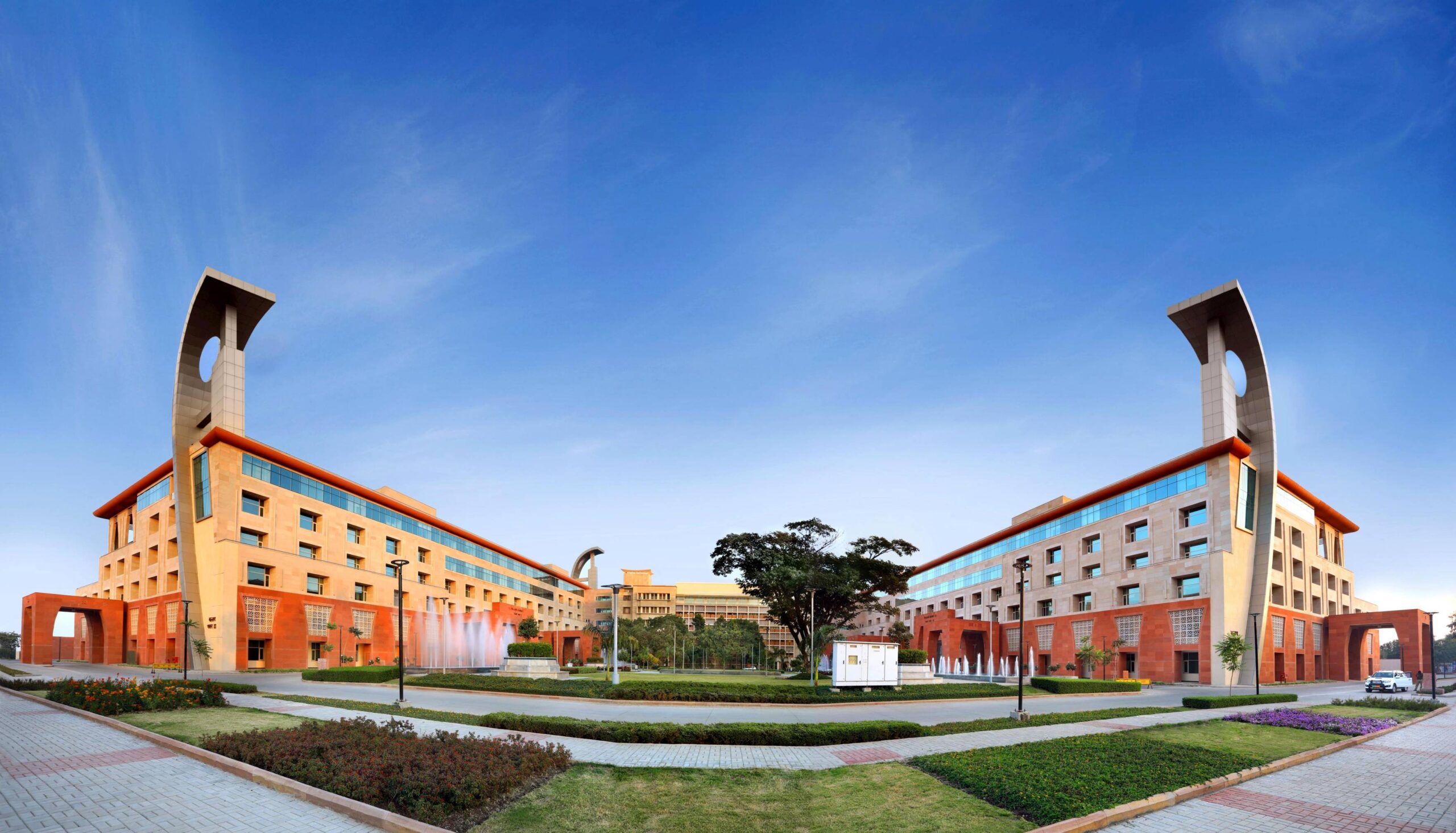
Vallabh Bhawan is the State Secretariat of Madhya Pradesh, located atop Arera Hill in Bhopal. Flanked by a large lake on one side of the hill and a refreshing green expanse on the other, the site is blessed with views of the remarkable natural, scenic beauty that its vicinity is known for. These views are framed by an apparent visual axis created by the Vindhyanchal Bhawan and Satpura Bhawan on either side, with an exquisitely landscaped foreground.
The existing context reflects an amalgamation of modern architecture in the buildings of the Secretariat (housed within a built-up area of 10, 00, 000sq-ft) and traditional char bagh style landscaped gardens commonly seen during the time of the nawabs of Madhya Pradesh. Completed within three years in 2018 and situated on a site area of 25 acres at such a strategic location which can be seen from the far reaches of the city, Vallabh Bhawan was imagined to be the “crowning jewel” of Arera Hill, offering magnificent views to and from Bhopal.

Furthering the strong axial relationship of Vallabh Bhawan with the Vidhyanchal Bhavan and Satpura Bhawan on either side of the site, a central promenade extends to the other end aligning the building with the New Vidhan Sabha (Legislative Assembly), – thereby creating a strong visual relationship between the Legislature and the Executive, an axis previously unexplored, and linking them to an integrated master plan. Inspired by a modern interpretation of the turrets, horizontal bands and stepped forms in the architecture around it, Vallabh Bhawan imbibes these contextual influences into its own architectural vocabulary to reflect a seat of power that celebrates the cultural richness of its state hand-in-hand with contemporary styles.
The planning of Vallabh Bhawan itself is on the basis of a purely rational inter-relationship between the various functions of the building segregated into three distinct programme elements within a single, compact and efficient complex – namely, visitor access zones, staff access zones and VIP access zones. Some of the facilities provided here include meeting halls, conference halls, ministers’ rooms, a library, a dispensary, etc. The U-shaped form of the building not only creates an inviting entrance but also forms a seamless loop between the three primary buildings, creating a strong correlation between them. The design frames views of the site through an interplay of scales and proportions.
Traditional architectural elements like chhatris, jaalis and colonnades were given a contemporary flavour by using restraint and keeping the forms simple, so that the basic shape may express itself. The sweeping form of the turrets, popularly referred to as the ‘beacons of Democracy’, are prominently visible from around the city, reaffirming the citizen’s confidence in a strong and vibrant democratic nation. In addition to this, modern elements such as fins, pergolas and solar panels keep the structure protected from the harsh sunlight. Landscape strategies involve the use of evergreen trees to obstruct solar heat gain and indigenous plants that require little water and a zero discharge rainwater system for maximum water conservation on the site.




The double glazing is recessed deep in the cavity walls, giving depth to the building facade and a feeling of strength and dignity to the Secretariat. The stone fins in the façade create shadows that break the flatness of the stone cladding. The stone jaalis provide a much-needed perforated barrier to the glass openings and add to the play of light and shadow seen on the surface. In terms of materials used, the façade consists of a mix of traditional – sandstone (jaalis, cladding, fins) and modern (glistening metal). The design of Vallabh Bhawan aims to translate the rich cultural fabric of the state and bring it to the global stage using contemporary styles through architecture. This amalgamation of architectural vocabularies, when married together, binds the glory of the past with the aspirations of a forward-looking community to create a unique identity that embodies the spirit of Madhya Pradesh. The building is extremely popular in Bhopal and has received wide public acclaim from the local press, hailing it as a trendsetter, besides winning global recognition.




Images

















Project Facts
Location: Bhopal, Madhya Pradesh
Site Area: 25 Acres
Built Up Area: 10 lakh sq. ft.
Year of completion: 2018













